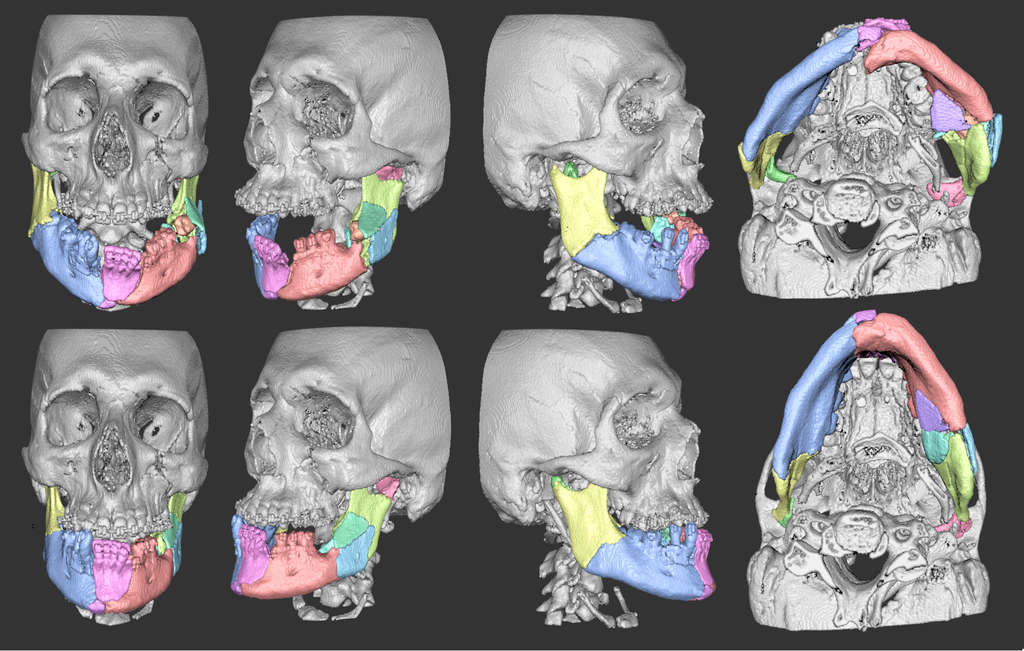Haptics-Assisted Cranio-Maxillofacial Surgery Planning
Cranio-maxillofacial surgery to restore normal skeletal anatomy in patients with serious trauma to the face can be very complex and time consuming. But it is generally accepted that careful pre-operative planning will lead to a better outcome with a higher degree of function and reduced morbidity and also reduced time in the operating room. However, today's surgery planning systems are primitive, relying mostly on the user's ability to plan complex tasks using a two-dimensional graphical interface.
We are developing a visuo-haptic system for planning the restoration of skeletal anatomy in facial trauma patients which combines stereo visualization with six degrees-of-freedom, high-fidelity haptic feedback to enable analysis, planning, and preoperative testing of alternative solutions for restoring bone fragments to their proper positions in a virtual model derived from patient-specific CT data (Figure 1). The stereo display gives the surgeon accurate visual spatial perception and the haptics system guides the surgeon by providing intuitive contact forces when bone fragments are in contact as well as six degrees-of-freedom attraction forces (Snap-to-fit) that can be used to find precise bone fragment alignment.
| Figure 1: Video of visuo-haptic planning system. |
Case Study
A senior surgeon with no prior experience of the system received 45 minutes of training on the system. Following that he completed a virtual reconstruction in 22 minutes of a complex mandible fracture with a reduced and well adapted result (Figure 2).

|
| Figure 2: Virtual reconstruction of a complex mandible fracture: (top row) before; (bottom row) after. |
People
- Ingrid Carlbom, Centre for Image Analysis
- Pontus Olsson, Centre for Image Analysis
- Fredrik Nysjö, Centre for Image Analysis
- Jan-Michael Hirsch, Department of Surgical Sciences, Oral and Maxillofacial Surgery
Related Projects
Snap-to-fit, a Haptic 6 DOF Alignment Tool for Virtual Assembly
Visualization and Haptics for Interactive Medical Image Analysis
Orbit Segmentation

